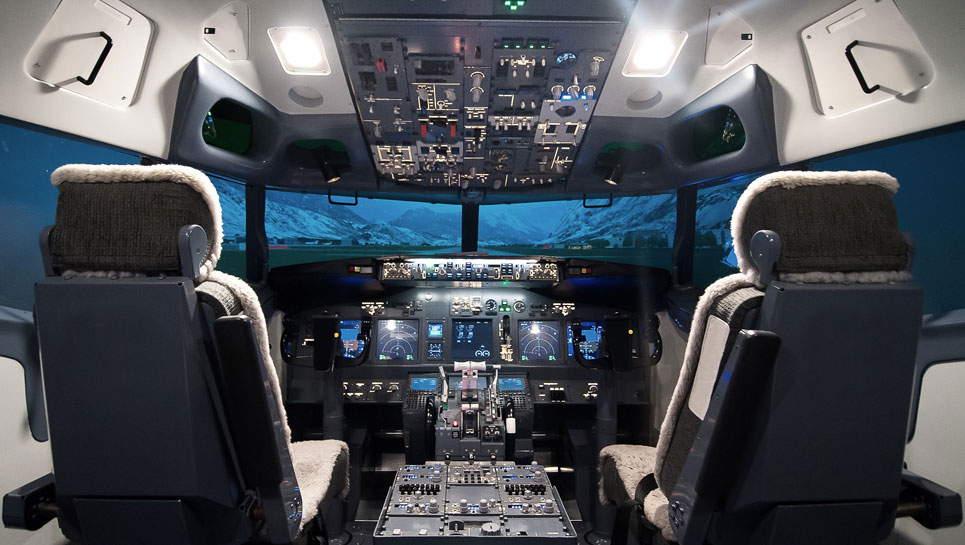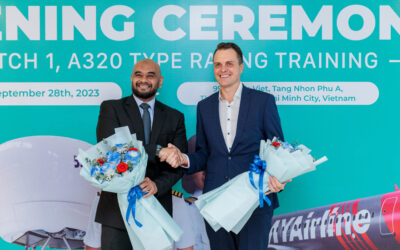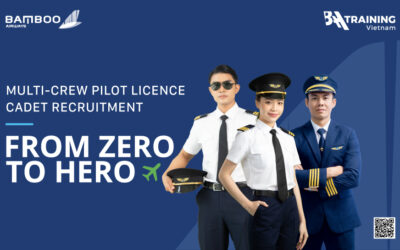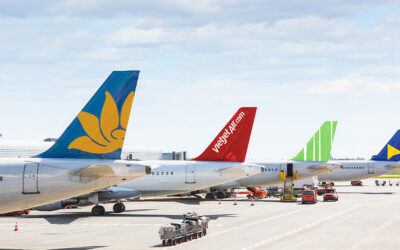Aviation is one of the most regulated industries in the world. Meanwhile pilots are among the very few professionals that are required to do repeated training as well as complete regular and rigorous examinations to maintain the existing skills and develop new ones.
Prior to becoming an airline pilot, a person has to go through many training stages that in total can take up to two years of intensive education. However, the issue of a licence and relevant certificates does not mean that there would be no more training. Training it is a faithful companion of each pilot throughout the entire career.
Among the constant courses every pilot needs to periodically repeat is recurrent training and checks relevant to the type or variant of aircraft on which a pilot operates. Wondering why it is needed?
According to the European Union Aviation Safety Agency (EASA), “each flight crew member shall be periodically checked to demonstrate competence in carrying out normal, abnormal and emergency procedures”.
The main aim of this training is to maintain proficiency in all aspects of flying. Certain failures and emergencies are given to the crew during training, which test their knowledge of the aircraft systems and their skills to fly it.
Aviation is all about safety. Even if an airline is one of the safest in the world and rarely deals with any kind of emergency situations, its flight crew members still have to know how to cope with engine malfunctions, how to perform emergency landing on water or what to do if one of the pilots becomes incapacitated.
Practice makes perfect. In aviation, therefore, practice makes pilots, as well as the companies they work for, more confident in their own competences and contributes to enhanced safety.
Recurrent Training. Is It Always the Same?
Although the general structure of recurrent training is defined by the regulatory body and airline’s recurrent training has to be based on the structure provided, often the design of this training slightly varies depending on the operator and aircraft type. And here are the answers why.
Some airlines can include additional training, such as area or route specific training, because of the need for sharper pilots’ skills to, for example, take off or land at challenging airports or operate in harsh or extreme environments.
Also, recurrent training can include some discretionary training that has been highlighted by the airlines’ Safety Management System (SMS).
While the training department plans recurrent training, it reviews incidents and recent events that may have had implications for the airline’s operations and provoked thoughts among the flight crew. Not to omit the fact that recurrent training at many airlines can be supplemented with additional training after major aircraft incidents or accidents.
For example, following the ditching of the US Airways Flight 1549 in the Hudson River, New York, in January 2009, many airlines included a similar event in their recurrent training. This allowed flight crews to simulate the situation in the safety of a simulator and test their ability to maneuver, manage and execute a comparable outcome.
Each airline company sets out its specific training requirements throughout a three-year cycle, ensuring that all major failures of aircraft systems are examined during this period.
Although some peculiarities of recurrent training are dictated by the environment of the industry and specific airline operations, these do not change the fact that recurrent training and checks are mandatory.
Recurrent Training and Checks. What Are They?
Ground and flight training. Each and every flight crew member has to take recurrent ground and flight training in a Flight Simulation Training Device (FSTD) or an aircraft, or a combination of FSTD and aircraft training, at least every 12 calendar months.
In terms of the ground phase, recurrent training includes such parts as aircraft systems, operational procedures and requirements (including ground de-icing/anti-icing and pilot incapacitation) as well as accident/incident and occurrence review.
If we talk about aircraft/FSTD training, this has to be structured in a way that all major failures of aircraft systems and associated procedures are covered in the preceding three years period.

CRM training. High importance is also given to refreshing, developing and demonstrating soft skills. According to EASA, “elements of CRM shall be integrated into all appropriate phases of the recurrent training”.
These critically important soft skills include pilots’ communication skills, their ability to make safe and sound decisions, their leadership skills, how they perform under pressure and how they react and work as an efficient team when confronted with a problem.
Operator proficiency check. Also, each flight crew member is obliged to do operator proficiency check. This examination is carried out to satisfy the airline that a pilot is up to the company’s standards and that he/she has the ability and competence to continue to operate for the airline. The validity period of this check is six months.
Emergency and safety equipment training and checking. Each flight crew member must know the location and use of all emergency and safety equipment carried. The validity period of these checks usually is 12 calendar months.
Line check. Also, each airline pilot is required to complete a line check on the aircraft to demonstrate competence in carrying out normal line operations described in the operations manual. The validity period of the line check is 12 calendar months.
“During the line check a pilot is expected to perform satisfactorily a complete line operation, including pre-flight and post-flight procedures and use of the equipment provided, as specified in the operations manual. When pilots are assigned duties as pilot flying and pilot monitoring, they should be checked in both functions”, EASA provides.
Worth highlighting that when operator proficiency check, line check and emergency and safety equipment training and checking are undertaken within the last three months of the validity period, the new validity period begins from the original expiry date.
To make it more simple and clear, if the licence expires on 30 April 2020, a pilot can revalidate it from 1 February, 2020.
All pilots, regardless of the size of their aircraft, must undergo some form of recurrent training. It is obvious that the larger the aircraft, the greater and more complex the problems can be. However, any situation, no matter the size or complexity of the aircraft, will require a level of knowledge, skill and attitude to safely cope with the problem and have a safe outcome.








